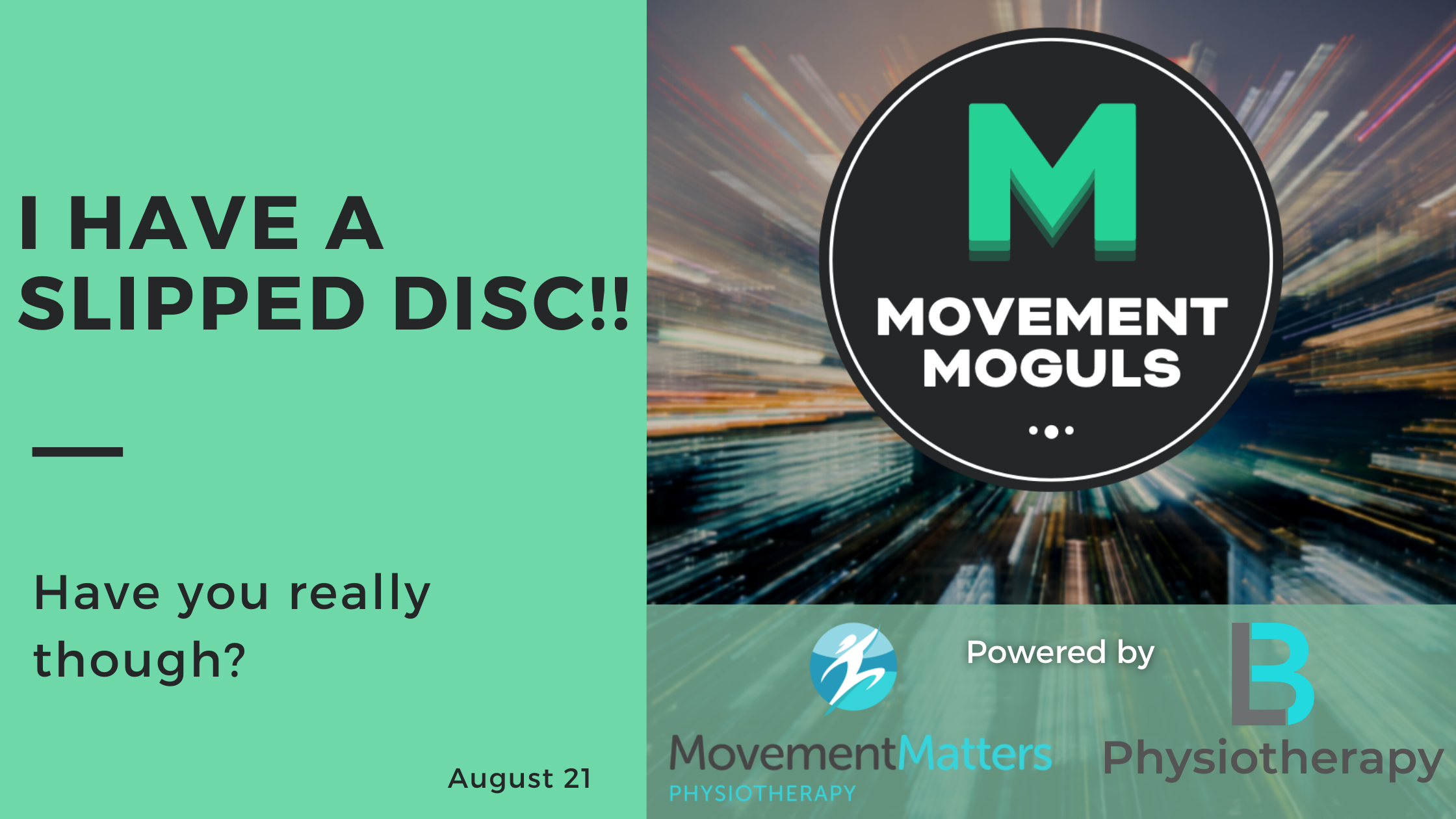“I have a slipped disc” - have you really though?
Introduction
There is a lot of stigma around back pain, particularly concerning your discs. People hear they have a problem with their disc, and they fear the worst! How many of you have heard “you have a slipped disc” or “you need to protect your back because it’s vulnerable and fragile” or “once you have a bad back, you will always have a bad back”.
Unfortunately, these MYTHS have been embedded in our society and many people fear movement and exercise due to not wanting to “slip a disc” or harm their back. Let’s debunk some of these myths together shall we?
Firstly, what is an intervertebral disc exactly? The intervertebral disc is a thick, strong structure that sits in between your vertebrae (backbones) and plays a key role in distributing force through your spine and allows it to move – bending, twisting etc.
So what are these myths we have been told about our discs before?
Myth number 1 – Slipped discs
Now while your discs can be a source of back pain for some and may show up as bulging out a bit on scans, they cannot slip! Your discs are far too strong and there is no evidence in any of the literature that supports this notion. Bulging or degenerative discs are present in a large number of the population without any pain or symptoms. A recent large study found that 30% of 20-29 year olds had disc bulges without any symptoms whatsoever, and this number increased by about 10% for every decade older, even showing that 84% of 80 year olds having disc bulges with no symptoms! So just because you have a bulging disc doesn’t automatically equal pain, which also means that back pain you may experience is not always caused by a disc issue.
Myth number 2 – Your spine/discs are fragile and need protecting
Your spine is a strong, robust structure built to move to complete a variety of tasks in your everyday life and during exercise. The discs themselves have been shown to take 450kgs of compressive force in studies! That being said they can become irritated and cause pain, but it is not because they are unable to take force if loaded properly. Discs can become irritated and cause pain if they aren’t loaded appropriately or there is too much demand on them over a period of time. Lack of control around the spine or pushing too much demand on them too early is the cause of irritation and therefore pain.
To summarise:
· Your spine is a strong robust structure built to move and take load
· Your discs CANNOT slip and are extremely strong structures
· If you are experiencing disc or back pain it is more likely to be from too much of an activity too soon where the discs can become aggravated and cause pain along with other factors such as poor sleep, increased stress or anxiety that reduce your body’s ability to tolerate load.
We are built to move and use our spine as part of that function, your discs are a key component of this and help the spine take load when we are doing activities such as lifting or exercising. So don’t be afraid to bend or twist. However, if there is a weakness present in the way you move (or in other words if you have poor control in certain movements) the discs may be taking the brunt of it causing irritation and pain. You CAN move your spine… but it needs to be efficient and with the correct structures doing the correct jobs during the movement. Some food for thought…
Stay healthy and keep moving
Movement Moguls
———————————-
References
· “Systematic literature Review of Imaging Features of Spinal degeneration in Asymptomatic Populations” Brinjiki 2015.
· “Abnormal Magnetic-Resonance Scans of the Lumbar Spine in Asymptomatic Subjects” Boden et al 1990.
· “The Structural Components of the Intervertebral Disc” Markolf & Morris 1974.
————————————




